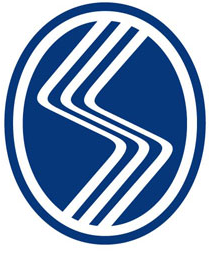Açık Akademik Arşiv Sistemi
Clinical evaluation of gauze-based negative pressure wound therapy in challenging wounds
JavaScript is disabled for your browser. Some features of this site may not work without it.
| dc.contributor.authors | Tuncel, U; Erkorkmaz, U; Turan, A | |
| dc.date.accessioned | 2020-02-27T07:17:40Z | |
| dc.date.available | 2020-02-27T07:17:40Z | |
| dc.date.issued | 2013 | |
| dc.identifier.citation | Tuncel, U; Erkorkmaz, U; Turan, A (2013). Clinical evaluation of gauze-based negative pressure wound therapy in challenging wounds. INTERNATIONAL WOUND JOURNAL, 10, 158-152 | |
| dc.identifier.issn | 1742-4801 | |
| dc.identifier.uri | https://doi.org/10.1111/j.1742-481X.2012.00955.x | |
| dc.identifier.uri | https://hdl.handle.net/20.500.12619/65285 | |
| dc.description.abstract | The aim of this randomised clinical study was to evaluate the effectiveness and safety of gauze-based negative pressure wound therapy (NPWT) in patients with challenging wounds. A total of 50 consecutive patients who had wound drainage for more than 5 days, required open wound management and had existence of culture positive infection were included the study. In this study, gauze-based NPWT was compared with conventional dressing therapy in the treatment of patients with difficult-to-heal wounds. The patients were randomly divided into two groups. Group I (n = 25) was followed by conventional antiseptic (polyhexanide solution) dressings, and group II (n = 25) was treated with saline-soaked antibacterial gauze-based NPWT. The wounds' sizes, number of debridement, bacteriology and recurrence were compared between group I and group II. The mean age of the patients was 59 center dot 50 years (range 2397). In group I, average wound sizes of pre- and post-treatment periods were 50 center dot 60 +/- 55 center dot 35 and 42 center dot 50 +/- 47 center dot 92 cm2, respectively (P < 0 center dot 001). Average duration of treatment was 25 center dot 52 +/- 16 center dot 99 days, and average wound size reduction following the treatment was 19 center dot 99% in this group. In group II, the wounds displayed considerable shrinkage, accelerated granulation tissue formation, decreased and cleared away exudate. The average wound sizes in the pre- and post-treatment periods were 98 center dot 44 +/- 100 center dot 88 and 72 center dot 08 +/- 75 center dot 78 cm2, respectively (P < 0 center dot 001). Average duration of treatment was 11 center dot 96 +/- 2 center dot 48 days, and average wound size reduction following the treatment was 32 center dot 34%. The patients treated with antibacterial gauze-based NPWT had a significantly reduced recurrence (2 wounds versus 14 wounds, P = 0 center dot 001), and increased number of the culture-negative cases (22 wounds versus 16 wounds, P < 0 center dot 047) in a follow-up period of 12 months. There was a statistically significant difference between two groups in all measurements. As a result, we can say that the gauze-based NPWT is a safe and effective method in the treatment of challenging infective wounds when compared with conventional wound management. | |
| dc.language | English | |
| dc.publisher | WILEY | |
| dc.subject | Surgery | |
| dc.title | Clinical evaluation of gauze-based negative pressure wound therapy in challenging wounds | |
| dc.identifier.volume | 10 | |
| dc.identifier.startpage | 152 | |
| dc.identifier.endpage | 158 | |
| dc.contributor.department | Sakarya Üniversitesi/Tıp Fakültesi/Temel Tıp Bilimleri Bölümü | |
| dc.contributor.saüauthor | Erkorkmaz, Ünal | |
| dc.relation.journal | INTERNATIONAL WOUND JOURNAL | |
| dc.identifier.wos | WOS:000316571100007 | |
| dc.identifier.doi | 10.1111/j.1742-481X.2012.00955.x | |
| dc.identifier.eissn | 1742-481X | |
| dc.contributor.author | Erkorkmaz, Ünal |
Files in this item
| Files | Size | Format | View |
|---|---|---|---|
|
There are no files associated with this item. |
|||











